In diesem Artikel, Wir zeigen Ihnen, wie Sie das Gelände oder die Expositionskategorien auf der windzugewandten Seite des Standorts bestimmen, die für die Berechnung von Windlasten unerlässlich sind. Wir werden die spezifischen Verfahren behandeln, die in ASCE beschrieben sind 7, NBCC 2015, und AS / NZS 1170.2 zur Bestimmung der Geländekategorien und besprechen Sie, wie diese auf jeden im SkyCiv Load Generator verfügbaren Referenzcode anwendbar sind.
ASCE 7-16/ASCE 7-22
Für ASCE 7, Das Verfahren zur Bestimmung der Expositionskategorie der Aufwindexposition eines Standorts wird im Abschnitt erläutert 26.7, je nach Gelände. In diesem Artikel, um den Verweis zu vereinfachen, Wir werden ASCE verwenden 7-16. Für jede Windquellenrichtung, Es sollte aus zwei Aufwindsektoren analysiert werden, die sich über ±45° erstrecken.
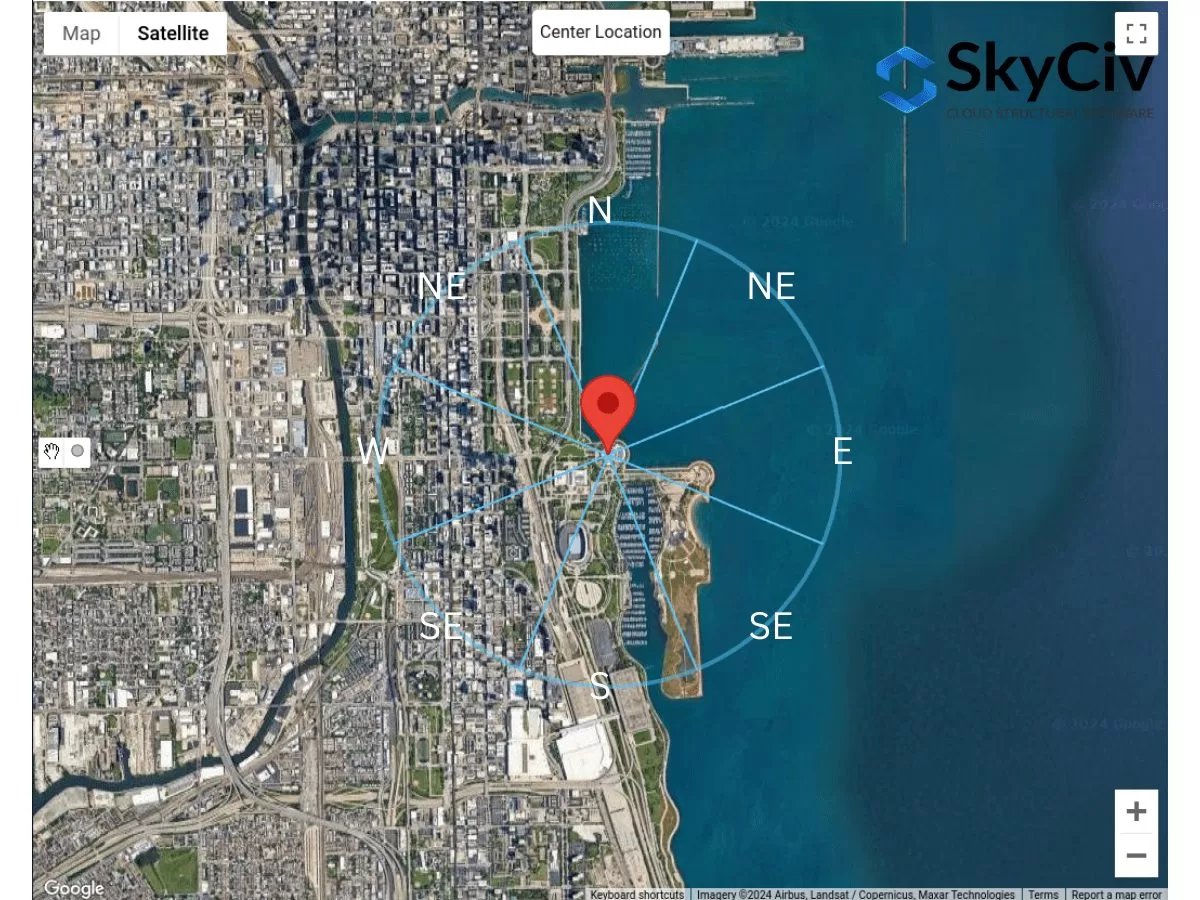
Abbildung 1. Geländesektoren für jede Windquellenrichtung.
Für jeden Sektor, Die Kategorie „Oberflächenrauheit“ sollte anhand der folgenden Definition basierend auf dem Abschnitt überprüft werden 26.7.2 von ASCE 7-16:
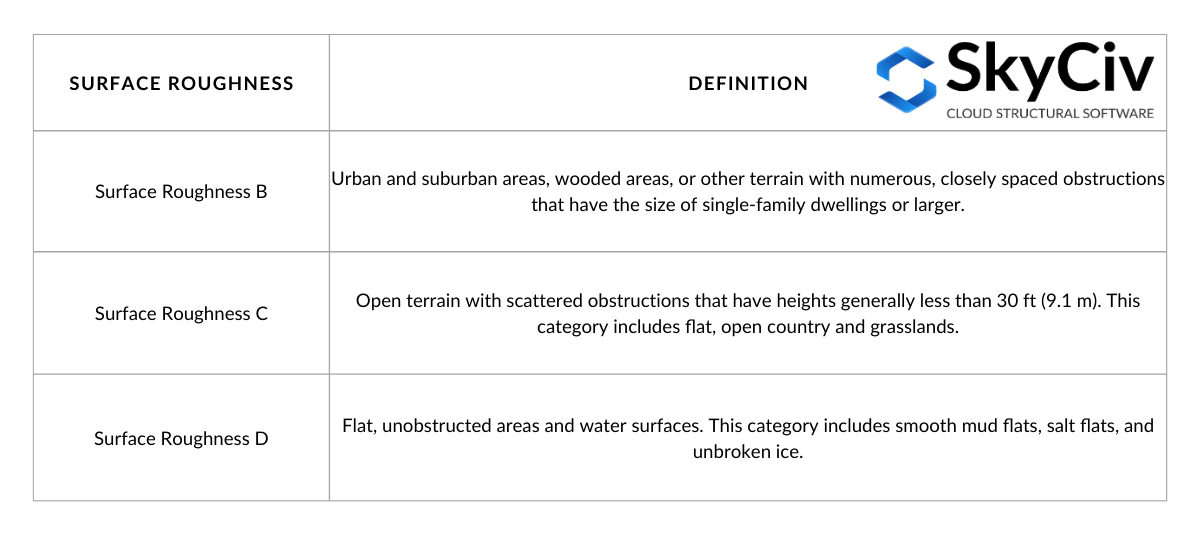
Tabelle 1. Definition der Oberflächenrauheit basierend auf dem Abschnitt 26.7.2 von ASCE 7-16.
Aus der Definition der Oberflächenrauheit, Wir können die Expositionskategorie des durch den Aufwindsektor begrenzten Geländes bestimmen. Die Definition für jede Expositionskategorie ist im Abschnitt angegeben 26.7.3 von ASCE 7-16 wie folgt:
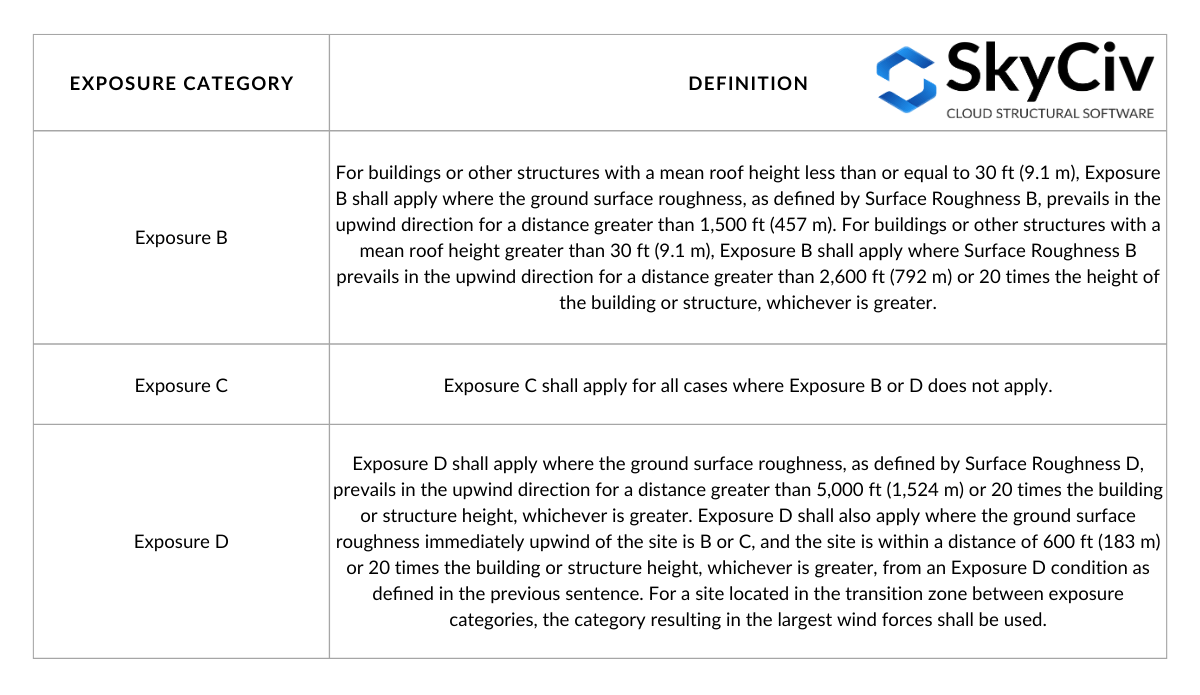
Tabelle 2. Definition der Expositionskategorie basierend auf dem Abschnitt 26.7.3 von ASCE 7-16.
Der Tisch 2 kann durch die folgenden Abbildungen basierend auf Abbildung C26.7-2 visualisiert werden:
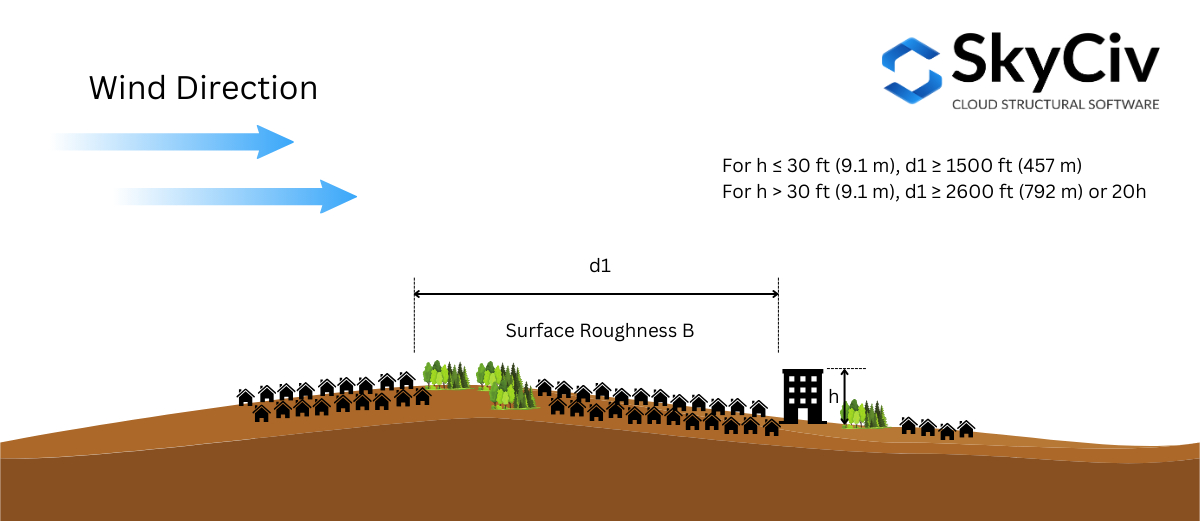
Abbildung 2. Für Exposition B sind Bedingungen für die Oberflächenrauheit gegen den Wind erforderlich.
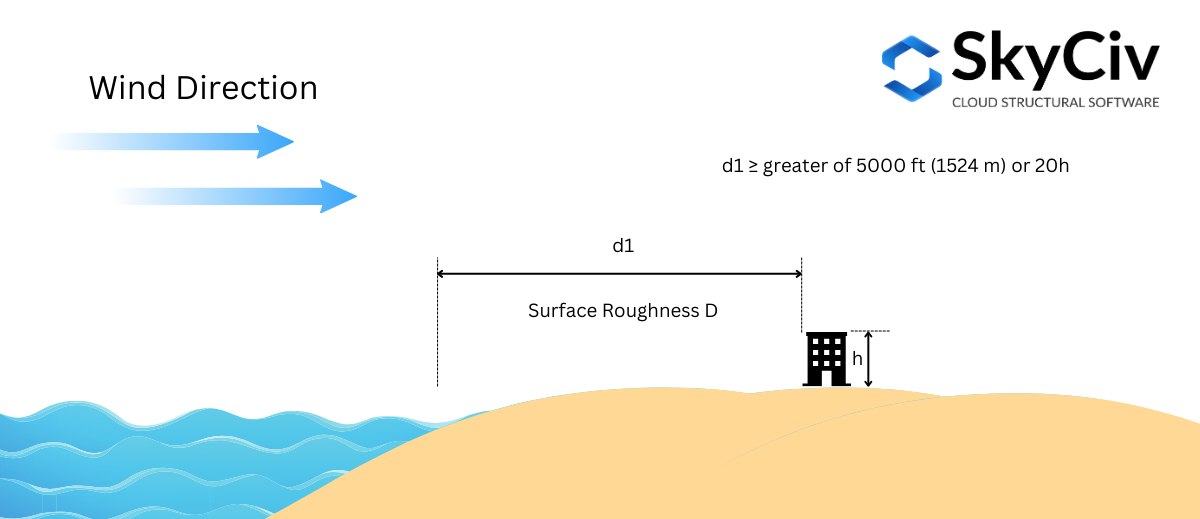
Abbildung 3. Für Exposition D ist eine Bedingung der Oberflächenrauheit gegen den Wind erforderlich – Fall 1.
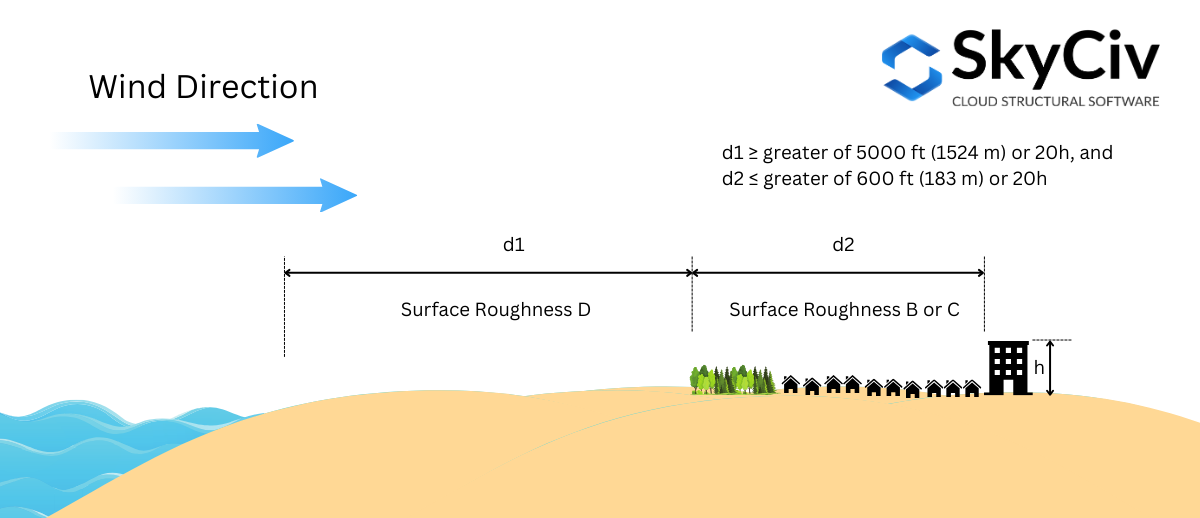
Abbildung 4. Für Exposition D ist eine Bedingung der Oberflächenrauheit gegen den Wind erforderlich – Fall 2.
Die Expositionskategorie muss für jede Windquellenrichtung bestimmt werden. Anhand eines Beispielstandorts – “1200 S DuSable Lake Shore Dr, Chicago, DAS 60605, USA”, Lassen Sie uns dies für jede Richtung analysieren.
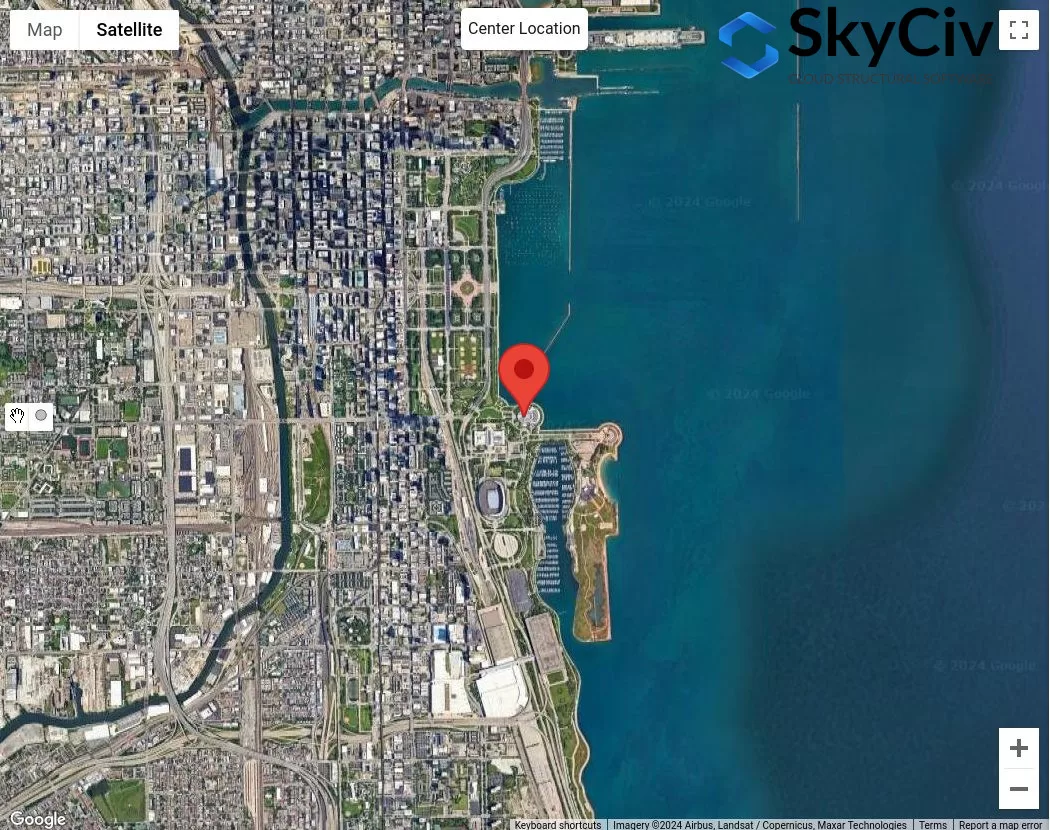
Abbildung 4. Probenort für die Analyse der Expositionskategorie.
Angenommen, die mittlere Dachhöhe der Struktur beträgt 25 ft ( \( 20h = 500 ft \)), Wir werden das folgende Verfahren verwenden, um die Expositionskategorie für jeden Sektor zu überprüfen:
Zustand 1. Bestimmen Sie anhand der Abbildung, ob die Belichtung D vorliegt 3:
Abbildung verwenden 3 – wo der Abstand \( d_{1} \) ist 5000 ft (1524 Mio.), Wir müssen nach Exposition D suchen, wobei die Oberflächenrauheit D insgesamt dominant ist 5000 Fußdehnung:
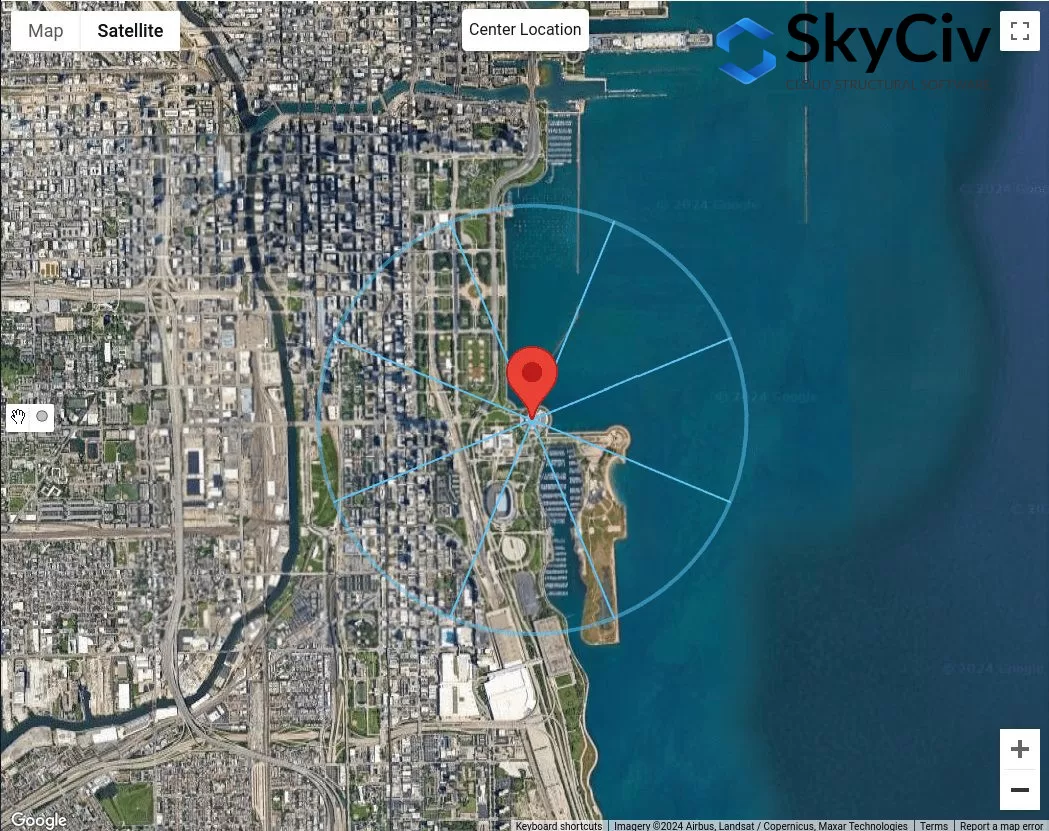
Abbildung 5. Versatzabstand von 5000 ft vom Standort des Standorts für die Prüfung der Exposition D anhand der Abbildung 3.
Aus der Abbildung 5, Wir können bereits daraus schließen, dass die Windquellenrichtungen sind N., GEBOREN, und E. haben insgesamt die Oberflächenrauheit D 5000 Fußdehnung. Deshalb, Diese Windquellenrichtungen sind Belichtung D..
Zustand 2. Bestimmen Sie anhand der Abbildung, ob die Belichtung D vorliegt 2
Abbildung verwenden 4 – wo der Abstand \( d_{1} \) ist 5000 ft (1524 Mio.) und Entfernung \( d_{2} \) entspricht 600 ft (183 Mio.), Wir müssen nach Exposition D suchen. Aus der Abbildung 5, Dies kann nur für die Windrichtung SO angewendet werden:
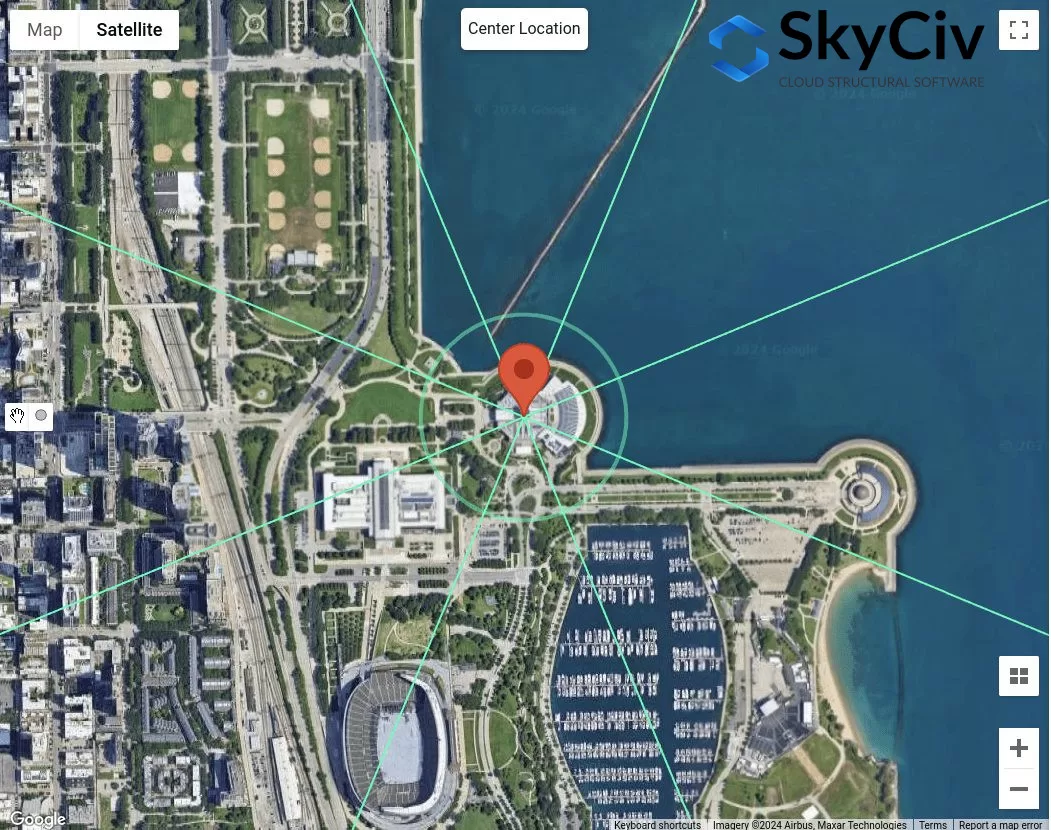
Abbildung 6. Versatzabstand von 600 Fuß und mehr 5000 ft vom Standort des Standorts für die Prüfung der Exposition D anhand der Abbildung 4.
Für Windquellenrichtung SE, mit \( d_{2} = 600 ft \), Wir können davon ausgehen, dass es sich bei diesem Abschnitt um die Oberflächenrauheit B handelt. Jedoch, für Distanz \( d_{1} = 5000 ft \), der Abschnitt ist es nicht 100% Oberflächenrauheit D. Daher, SE sollte nicht als Exposition D betrachtet werden.
Zustand 3. Bestimmen Sie anhand der Abbildung, ob Belichtung B vorliegt 1
Abbildung verwenden 3 – wo der Abstand \( d_{1} \) ist 1500 ft (457 Mio.) schon seit \( h < 30 ft \), Wir müssen nach Exposition B suchen.
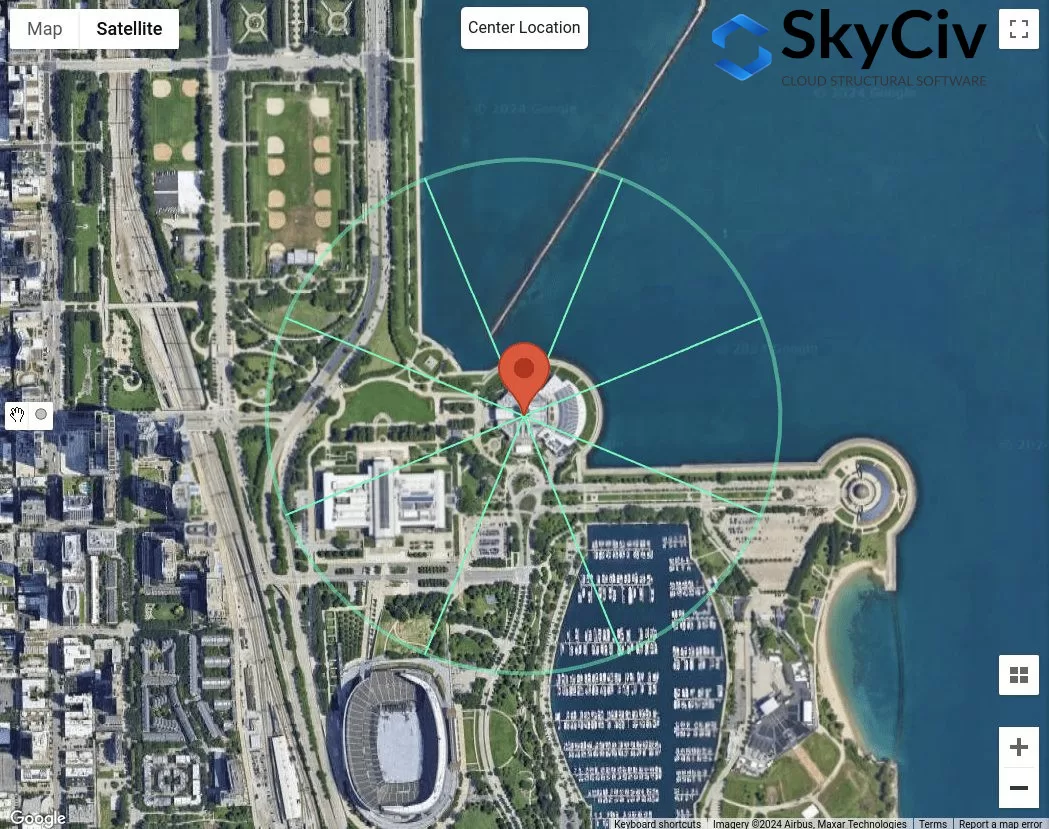
Abbildung 7. Versatzabstand von 1500 ft vom Standort des Standorts zur Prüfung der Exposition B anhand der Abbildung 3.
Aus der Abbildung 7, Wir können das für Windquellenrichtungen NW bestimmen, W., SW, und S werden als Exposition B klassifiziert, da die Oberflächenrauheit für jeden Richtungssektor die Oberflächenrauheit B ist.
Zustand 4. Wenn Bedingungen 1 zu 3 sind nicht wahr, deshalb, Das Gelände ist Exposition C.
Deshalb, für Windquellenrichtung SE, es wird in die Expositionskategorie C eingestuft. Zusammenfassend, Die Expositionskategorien für jede Windquellenrichtung sind in der Abbildung dargestellt 8 unten.
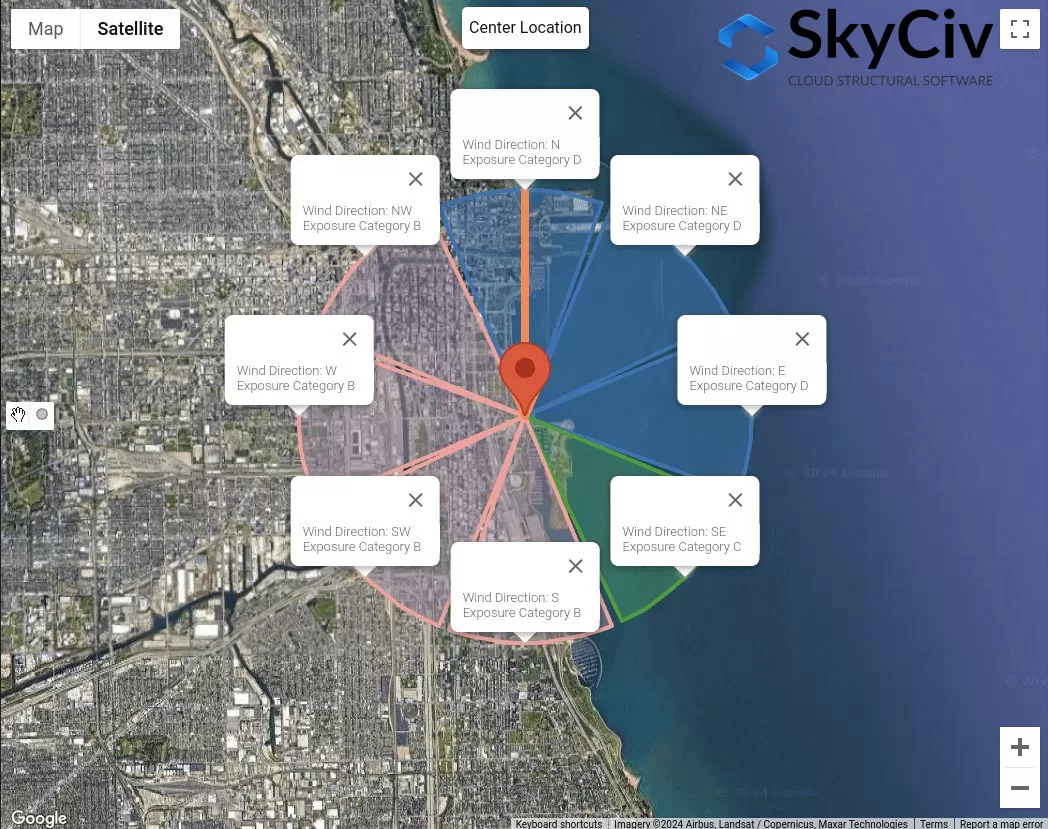
Abbildung 8. Die Expositionskategorien für jede Windquellenrichtung.
Diese Daten können verwendet werden, um die schlechteste Windquellenrichtung als Geschwindigkeits-Druckkoeffizienten zu bestimmen \( K_{mit} \), Topographischer Faktor \( K_{t} \), und Böeneffektfaktor \( G \) unter Verwendung einer detaillierten Berechnung werden von der Expositionskategorie beeinflusst.
NBCC 2015/2020
Für NBCC 2015, Das Verfahren zur Bestimmung der Expositionskategorie der Aufwindexposition eines Standorts wird im Abschnitt erläutert 4.1.7.3(5), je nach Gelände. Für jede Windquellenrichtung, Es sollte aus zwei Aufwindsektoren analysiert werden, die sich über ±45° erstrecken.
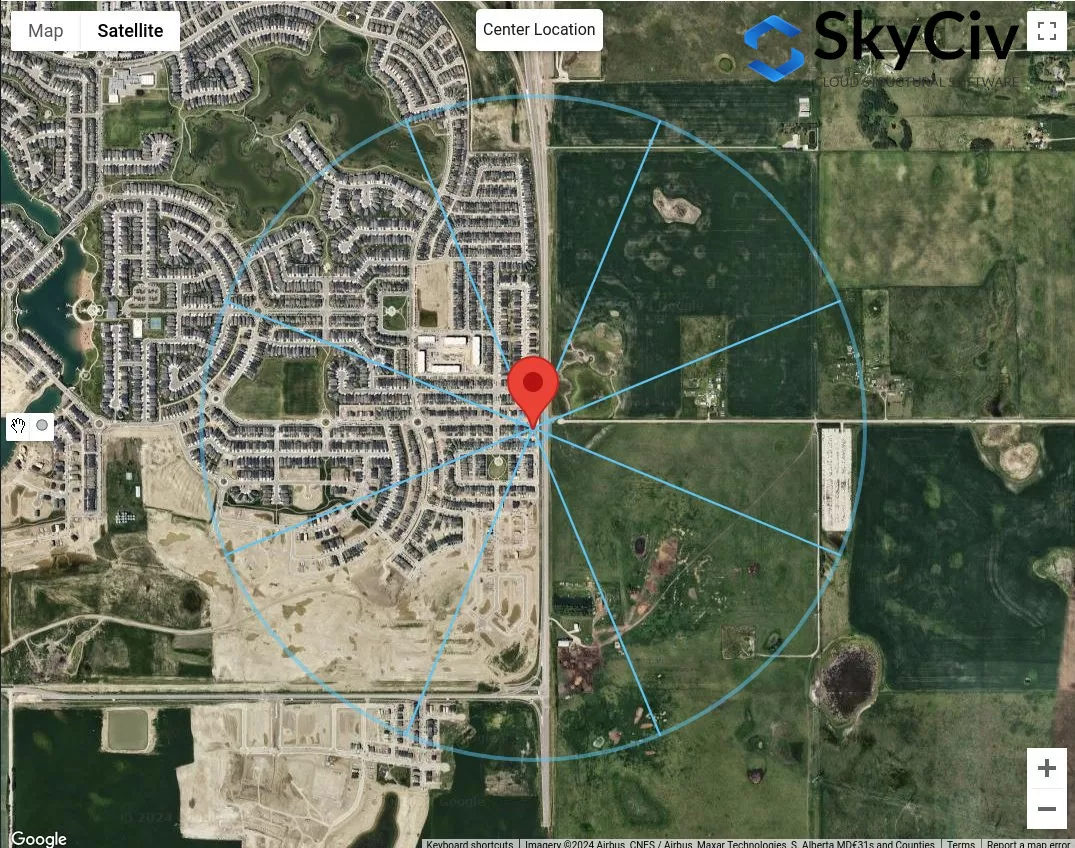
Abbildung 9. Geländesektoren für jede Windquellenrichtung.
Für jeden Sektor, Die Geländekategorie sollte anhand der folgenden abschnittsbezogenen Definition überprüft werden 4.1.7.3(5) von NBCC 2015:

Tabelle 3. Definition der Geländekategorien wie im Abschnitt definiert 4.1.7.3(5) von NBCC 2015.
Visualisierung der Optionen in der Tabelle 3:
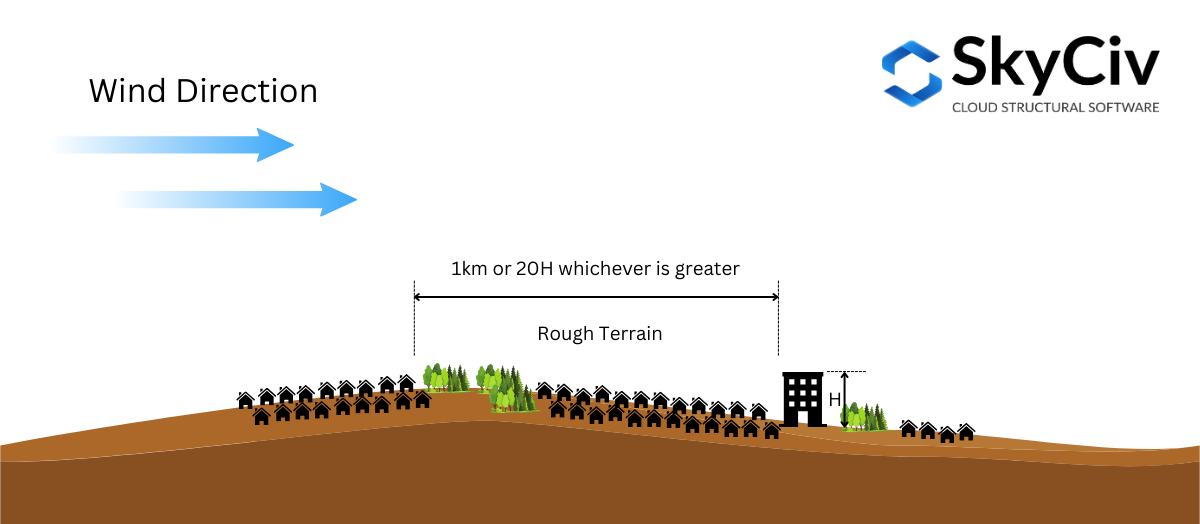
Abbildung 10. Definition von unebenem Gelände wie im Abschnitt definiert 4.1.7.3(5) von NBCC 2015.
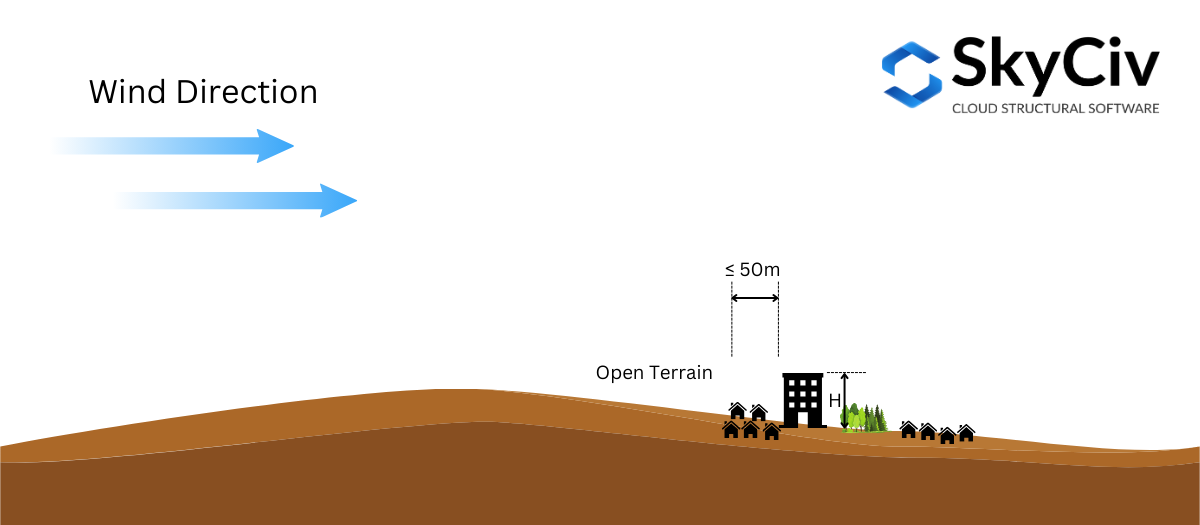
Abbildung 10. Definition von offenem Gelände wie im Abschnitt definiert 4.1.7.3(5) von NBCC 2015.
Basierend auf Abschnitt 4.1.7.3(5) von NBCC 2015, Es ist erlaubt, die zu interpolieren Belichtungsfaktor \( C_{e} \) im mittelschweren Gelände. Wenn die Entfernung in unwegsamem Gelände vom Standort des Bauwerks größer oder gleich 1 km ist oder 20 mal der Strukturhöhe, der größere Wert gilt, Das Gelände kann als berücksichtigt werden Unwegsames Gelände, und wenn der Abstand kleiner ist als 50 Mio., es gilt als Offenes Gelände. Andernfalls, der Belichtungsfaktor \( C_{e} \) gemäß Abschnitt 4.1.7.3(5) wird aus den Randwerten berechnet. Dies kann in Abbildung dargestellt werden 11 unten.
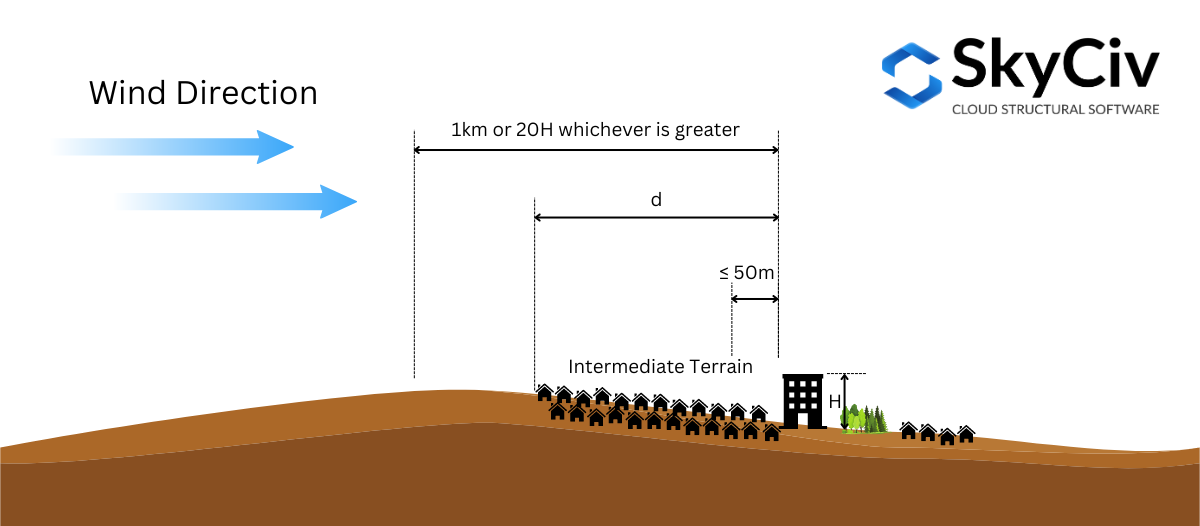
Abbildung 11. Definition von mittelschwerem Gelände wie im Abschnitt definiert 4.1.7.3(5) von NBCC 2015.
Um dies weiter zu veranschaulichen, Lassen Sie uns einen Beispiel-Site-Standort verwenden – “657 Masters Rd SE, Calgary, AB T3M 2B6, Kanada,” unter Annahme der Strukturhöhe \( H. \) ist 25 Mio. ( \( 20H = 500 Mio. \)).
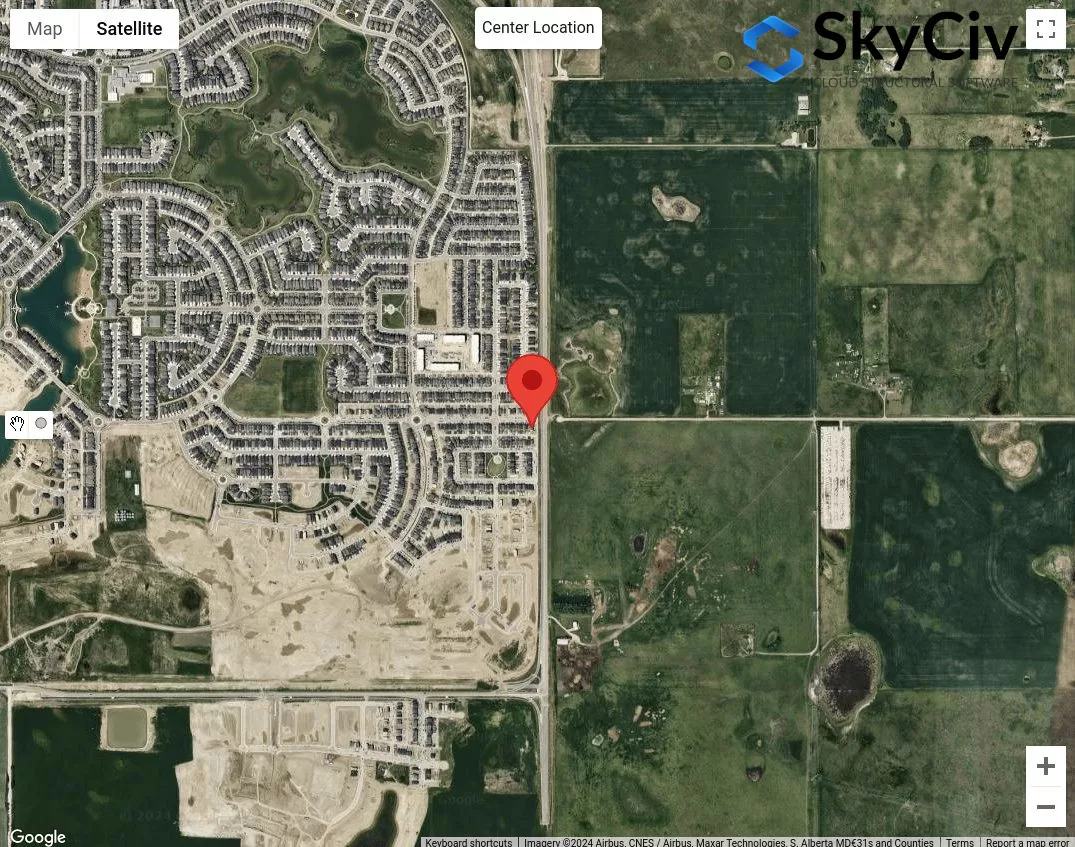
Abbildung 12. Probenort für die Analyse der Geländekategorie.
Der erste Schritt besteht darin, die offensichtlichen Kategorien für unebenes und offenes Gelände für jede Windquellenrichtung zu klassifizieren. Wir können 50m und max. zeichnen 1 km bzw \( 20 H. \) Radius vom Standortstandort.

Abbildung 13. Versatzentfernung von 50 m und 1 km zur Bestimmung der Geländekategorie anhand der Tabelle 1 Definitionen.
Aus der Abbildung 13, Wir können sagen, dass die Windquellenrichtungen sind GEBOREN, E., und SE werden klassifiziert als Offenes Gelände da die Länge des unebenen Geländes für jede Richtung weniger als 50 m vom Standort entfernt ist. Außerdem, für Windquellenrichtungen W und NW kann als unebenes Gelände klassifiziert werden, da die Länge des unebenen Geländes für diese Richtungen größer ist als 1 km. Für die Richtung der Windquelle N., Wir können konservativ davon ausgehen, dass das offene Gelände in dieser Richtung dominiert. Für den Rest, S und SW, Wir können daraus schließen, dass es sich um mittelschweres Gelände handelt und wir müssen die Entfernung des unebenen Geländes vom Standort messen.
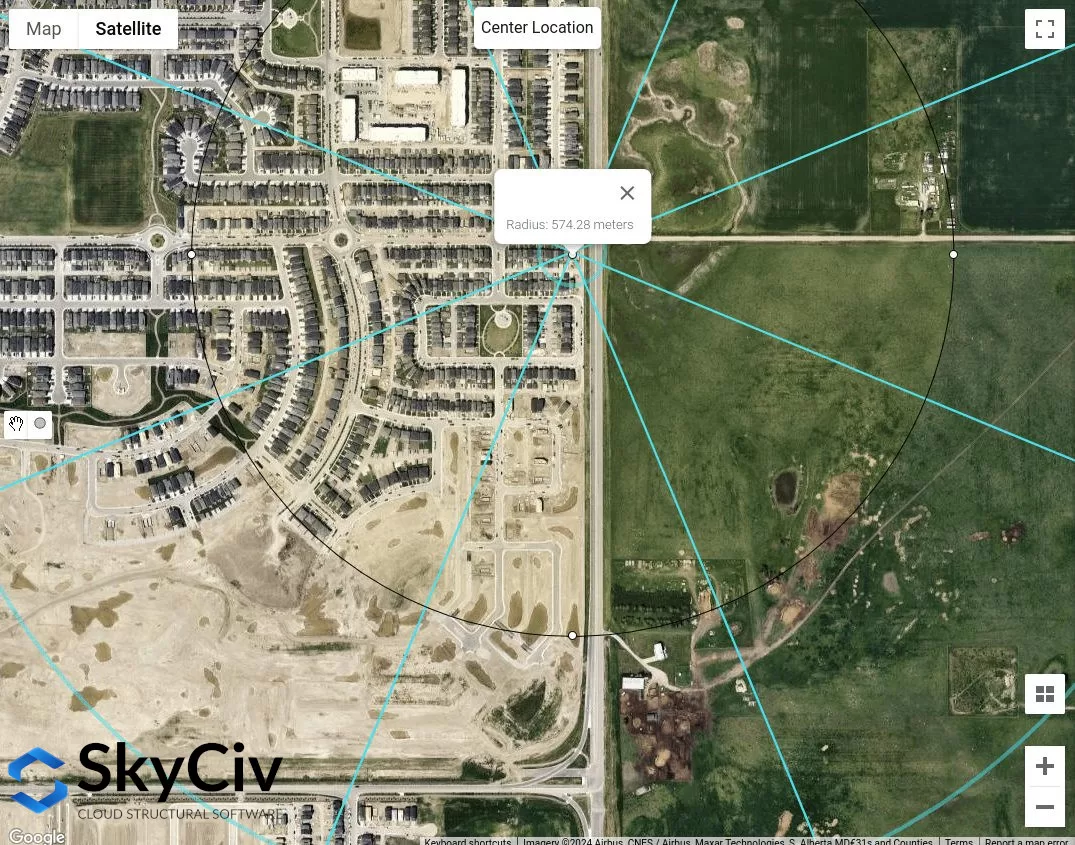
Abbildung 14. Ungefähre Länge unwegsamen Geländes, gemessen vom Standortstandort für SW-Windquellenrichtung gleich 574 Mio..
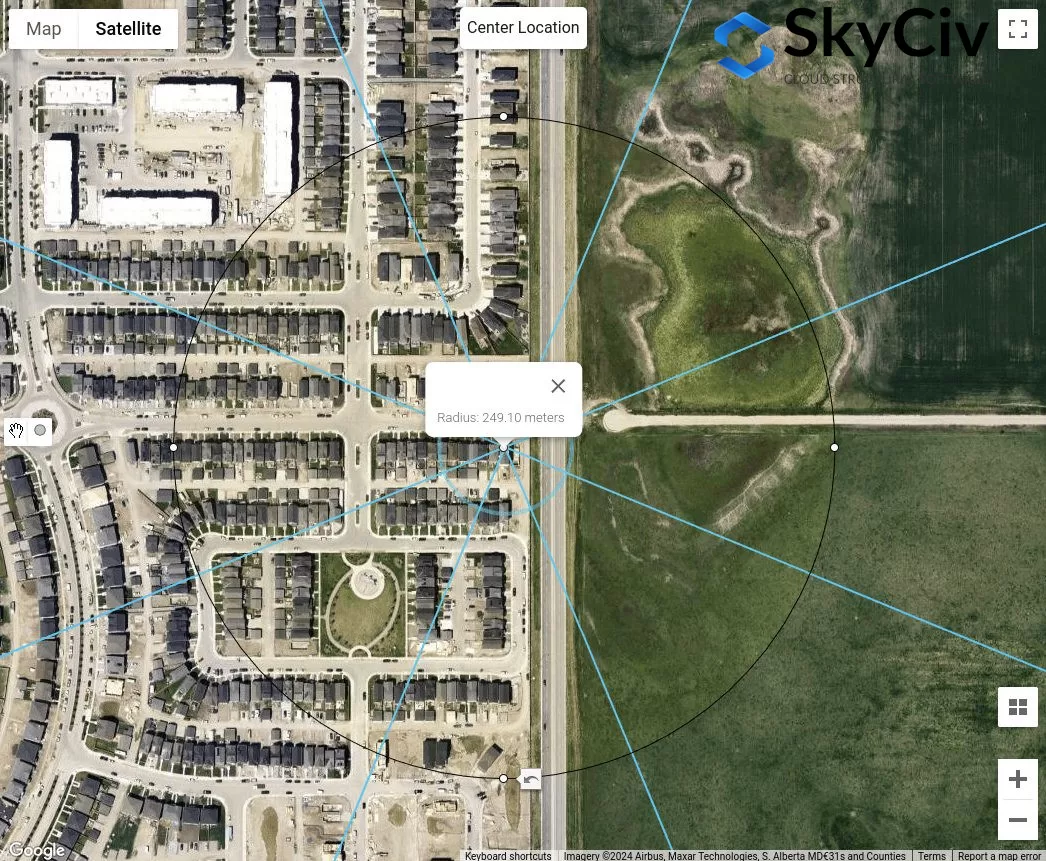
Abbildung 15. Ungefähre Länge unwegsamen Geländes, gemessen vom Standort aus, für die Richtung der S-Windquelle gleich 249 Mio..
Aus der obigen Analyse, Auf jeden Fall werden die Windquellenrichtungen bei offenem Gelände definitiv die konservativen Werte ergeben. Jedoch, wenn alle Windquellenrichtungen als mittelschweres Gelände klassifiziert sind, Mit dem oben beschriebenen Verfahren können Sie die geeignete Geländekategorie für jede Richtung bestimmen.
AS / NZS 1170.2 (2021)
Für AS / NZS 1170.2, Das gleiche Verfahren mit den oben genannten Referenzen gilt für die Bestimmung der Geländekategorie der Aufwindexposition eines Standorts. Dies wird im Abschnitt besprochen 4.2 von AS / NZS 1170.2 (2021). Für jede Windquellenrichtung, Es sollte aus zwei Aufwindsektoren analysiert werden, die sich über ±45° erstrecken. Die Definition jeder Geländekategorie wird unten basierend auf dem Abschnitt angezeigt 4.2.1 von AS / NZS 1170.2 (2021):
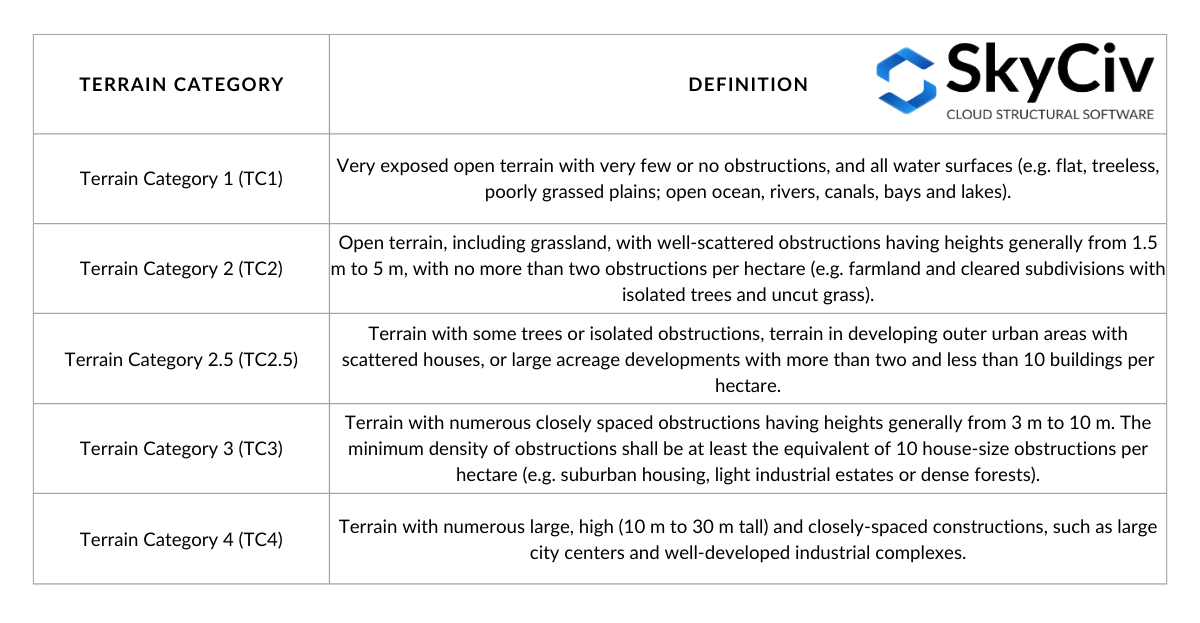
Tabelle 4. Definition der Geländekategorien wie im Abschnitt definiert 4.2.1 von AS / NZS 1170.2 (2021).
Bei der Bestimmung der Geländekategorie für eine Richtung, eine Verzögerungsdistanz gleich \( 20 mit \) aus der Lage des Bauwerks sind zu vernachlässigen. Von diesem Punkt, ein Versatzabstand (Durchschnittsentfernung) von 500 m oder \( 40 [object Window]), je nachdem, welcher Wert größer ist, sind wie in der Abbildung dargestellt zu verwenden 16 unten. Mit der \( mit \) Der Wert entspricht der durchschnittlichen Dachhöhe, \( h \), wenn es kleiner oder gleich ist 25 Mio.. Es ist möglich, dass es innerhalb dieser Durchschnittsentfernung mehrere Geländekategorien gibt, und als solches, Bei der Bestimmung ist die lineare Interpolation von zu verwenden \( M_{mit,Katze} \) Werte, abhängig von der Länge der jeweiligen Geländekategorie, wie in Abbildung dargestellt 4.1 von AS / NZS 1170.2 (2021). In diesem Artikel, Wir betrachten nur eine homogene Geländekategorie innerhalb der Mittelungsentfernung.
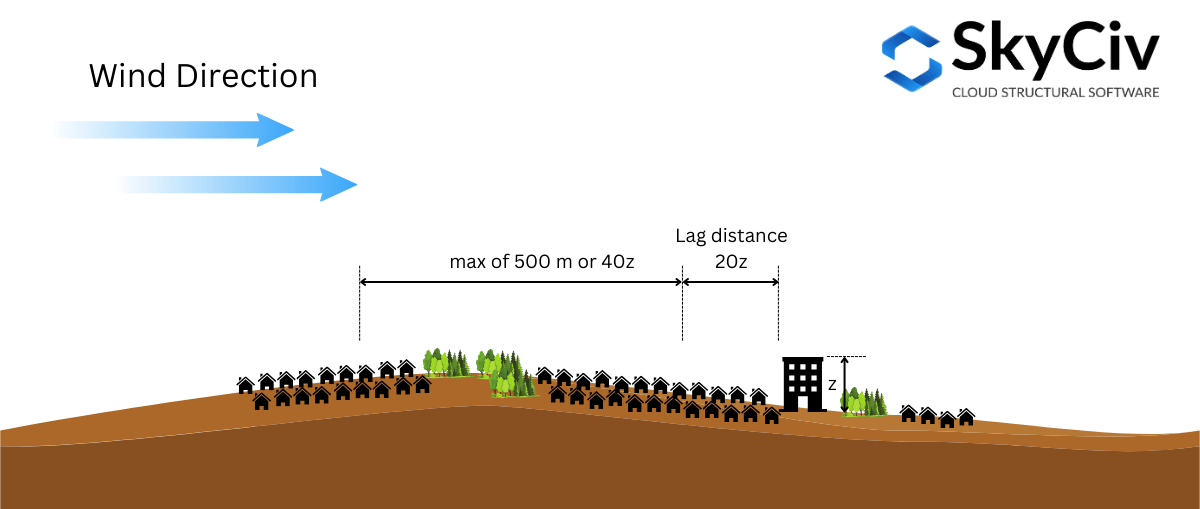
Abbildung 16. Darstellung der Entfernungen, die zur Bestimmung der Geländekategorie basierend auf AS/NZS verwendet werden 1170.2 (2021).
Um dies weiter zu veranschaulichen, Lassen Sie uns einen Beispiel-Site-Standort verwenden – Lat: 32°43’46″S Lang: 151°31’47″E. – unter Annahme der mittleren Dachhöhe \( h \) ist 10 Mio. ( wo \( 20z = 20h = 200 Mio. \) und \( 40z = 400 Mio. \)).
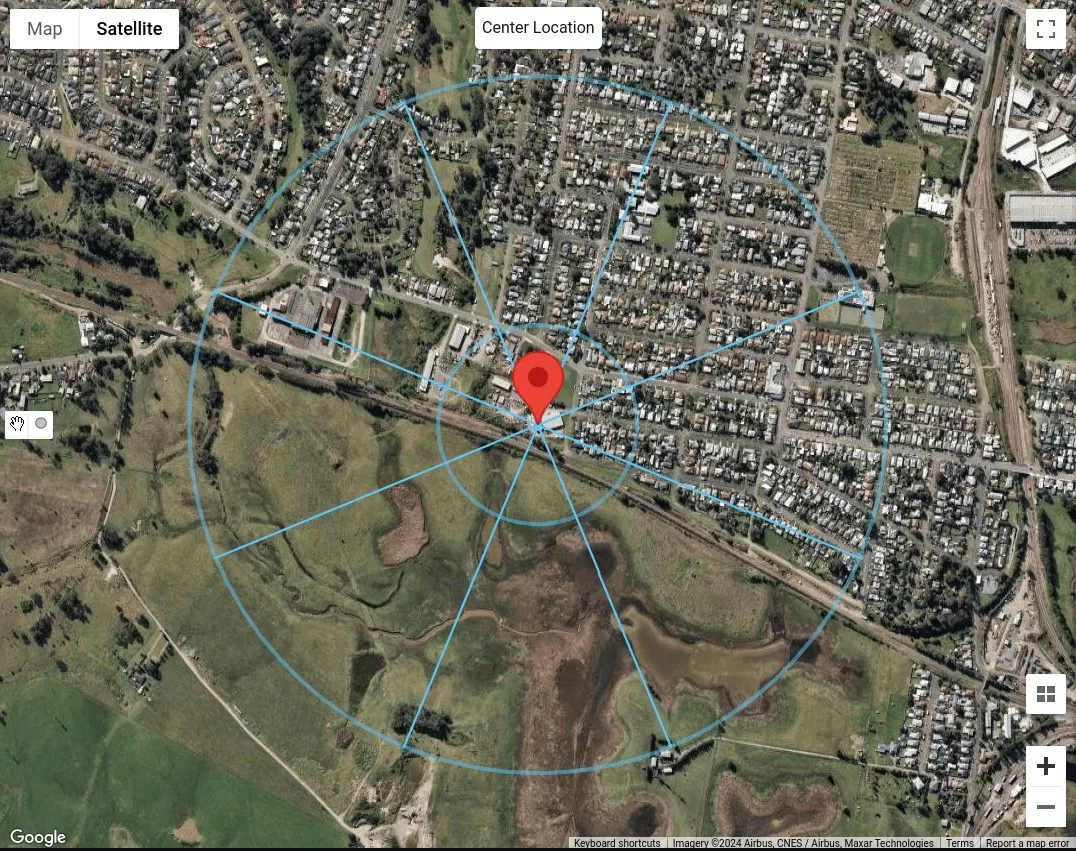
Abbildung 17. Der Standort des Standorts mit einer Verzögerungsentfernung gleich 200 m und Mittelungsabstand gleich 500 m für jede Windquellenrichtung.
Da wir die Geländekategorie über die gesamten 500m bzw. nur als homogen betrachten sollen \( 40mit \) Entfernung, Wir können bereits jede Windquellenrichtung klassifizieren. Unter der Annahme, dass die Gebäude auf N, NE und E, sind Gebäude, die es sind 5 zu 10 Ich bin groß, Wir können diese der Geländekategorie zuordnen 3 (TC3) wie in Tabelle gezeigt 4. Für Windquellenrichtungen SE, S., SW, und W, da es sich um Grasflächen ohne Hindernisse handelt, Wir können diese als Geländekategorie klassifizieren 1 (TC1). Schließlich, für Windquellenrichtung NW, Wir können daraus schließen, dass es mehr als zwei, aber weniger als gibt 10 Gebäude pro Hektar, mit verstreuten Häusern. Deshalb, Wir können dies als Geländekategorie klassifizieren 2.5 (TC2.5).
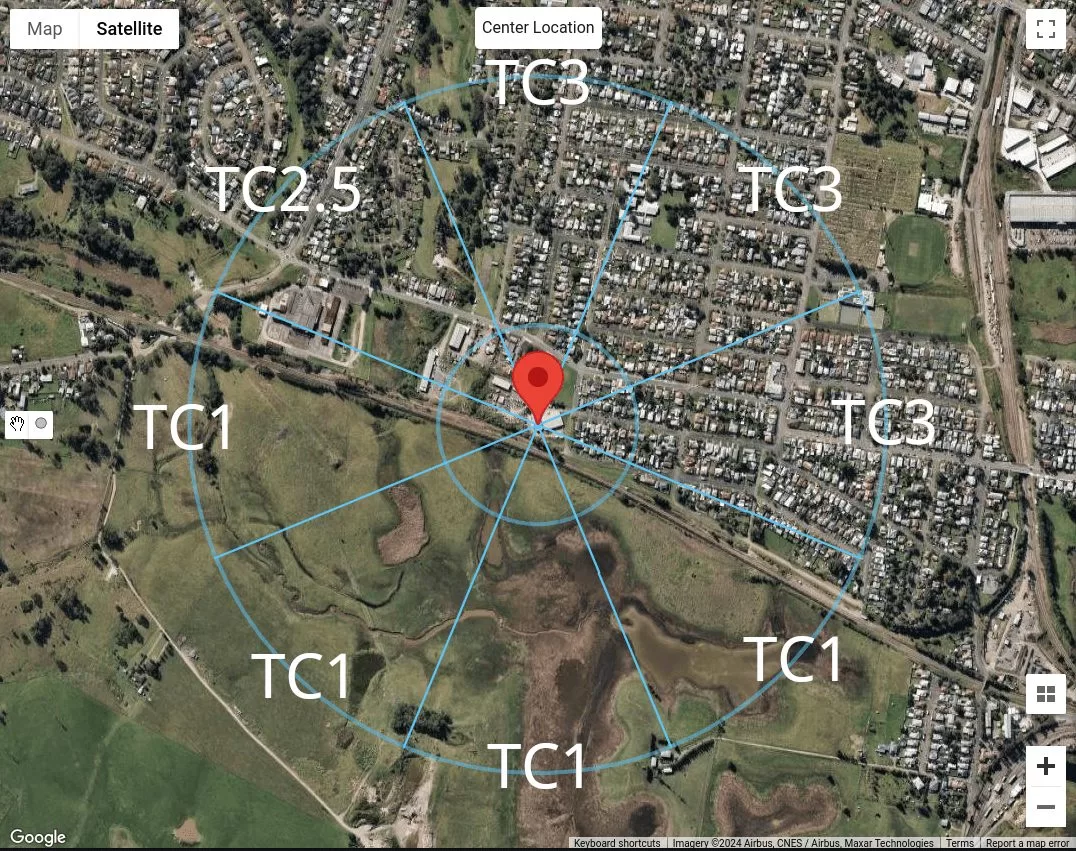
Abbildung 18. Zusammenfassung der Geländekategorieklassifizierung für jede Windquellenrichtung für unseren Beispielstandort.
Verwenden des SkyCiv-Lastgenerators
In SkyCiv Load Generator Version v4.7.0, Neue Kartenwerkzeuge werden eingeführt – Distanz messen und Entfernungsradien Werkzeug.
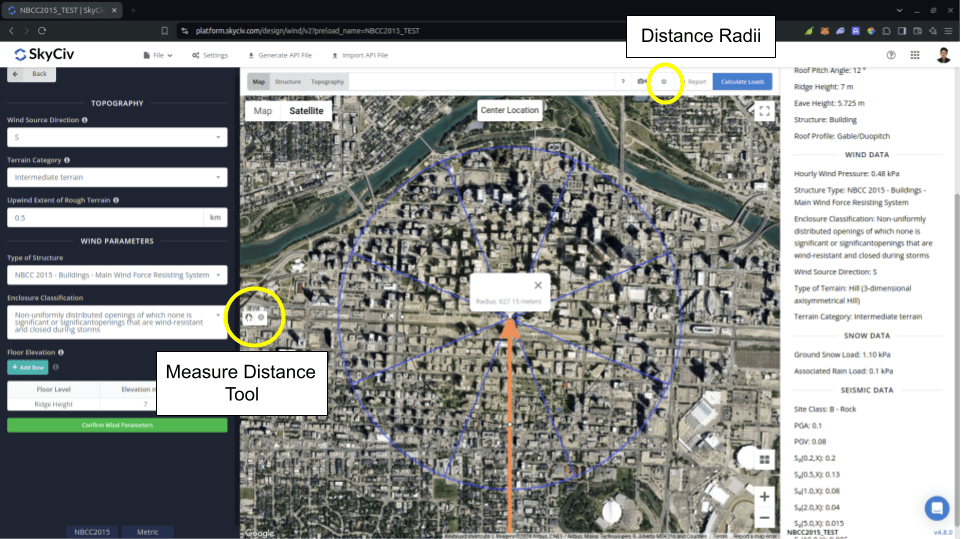
Abbildung 19. Entfernungsmesswerkzeuge im SkyCiv Load Generator eingeführt.
Mit der Distanz messen Das Werkzeug wird verwendet, um einen Kreis aus einem angeklickten Punkt in der Karte zu erstellen und seinen Radius in Metern anzuzeigen. Diesen Weg, Sie können die Entfernungen vom zu analysierenden Standort zu bestimmten Standorten messen. Dies kann bei der Messung im NBCC verwendet werden 2015 für die Ausmaß des unwegsamen Geländes gegen den Wind bei der Berechnung verwendet Belichtungsfaktor \( C_{e} \). Durch Klicken auf den erzeugten Kreis wird dieser aus der Karte gelöscht.
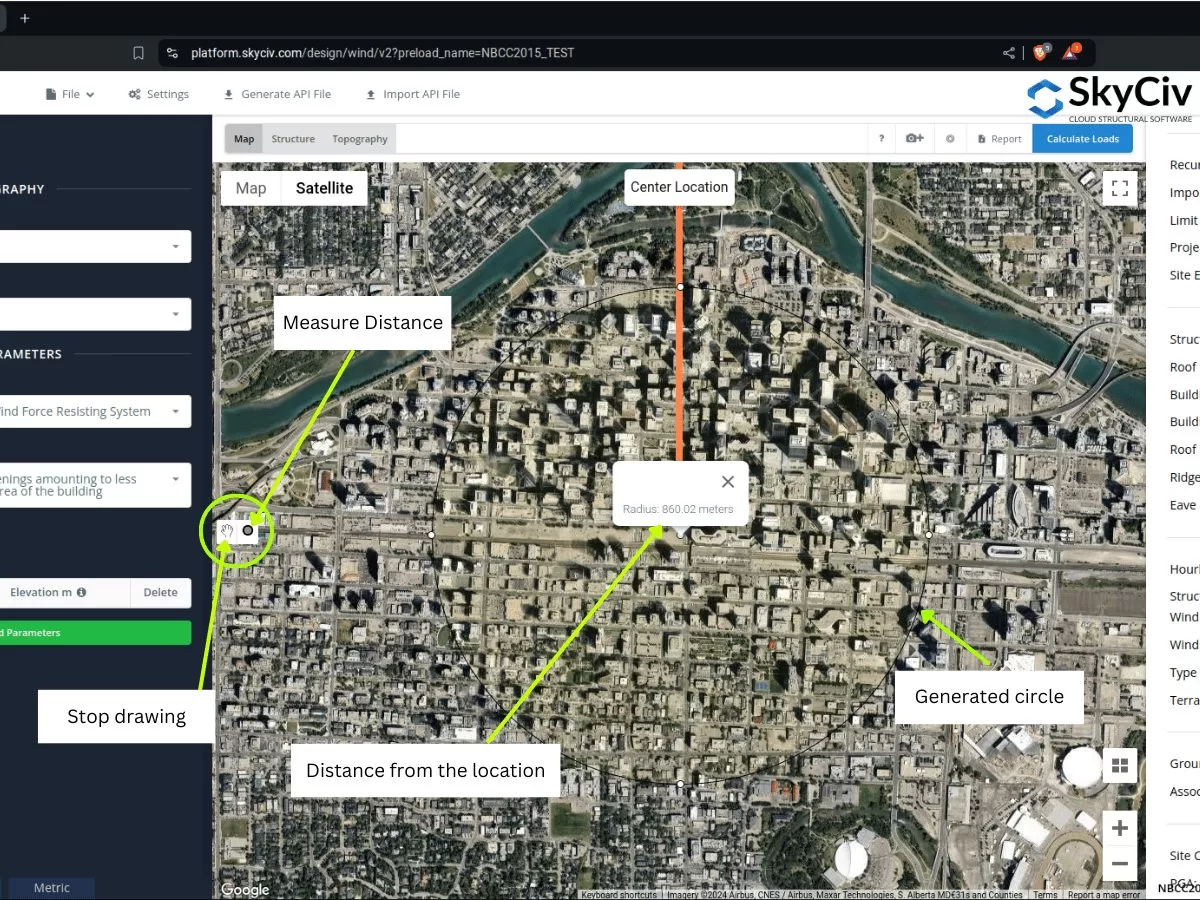
Abbildung 20. Das im SkyCiv Load Generator eingeführte Tool zum Messen des Abstands, das einen Versatz vom Standort erstellt und den Radius/Versatzabstand vom Mittelpunkt anzeigt.
Andererseits, bleibt die Entfernungsradien wird eingeführt, damit Benutzer für jede Windquellenkategorie Kreise mit bestimmten Entfernungen vom Standort zeichnen können. Es handelt sich um eine Umschalttaste zum Ein- oder Ausblenden der Entfernungsradien auf der Karte, mit dem Standort als Mittelpunkt der Kreise.
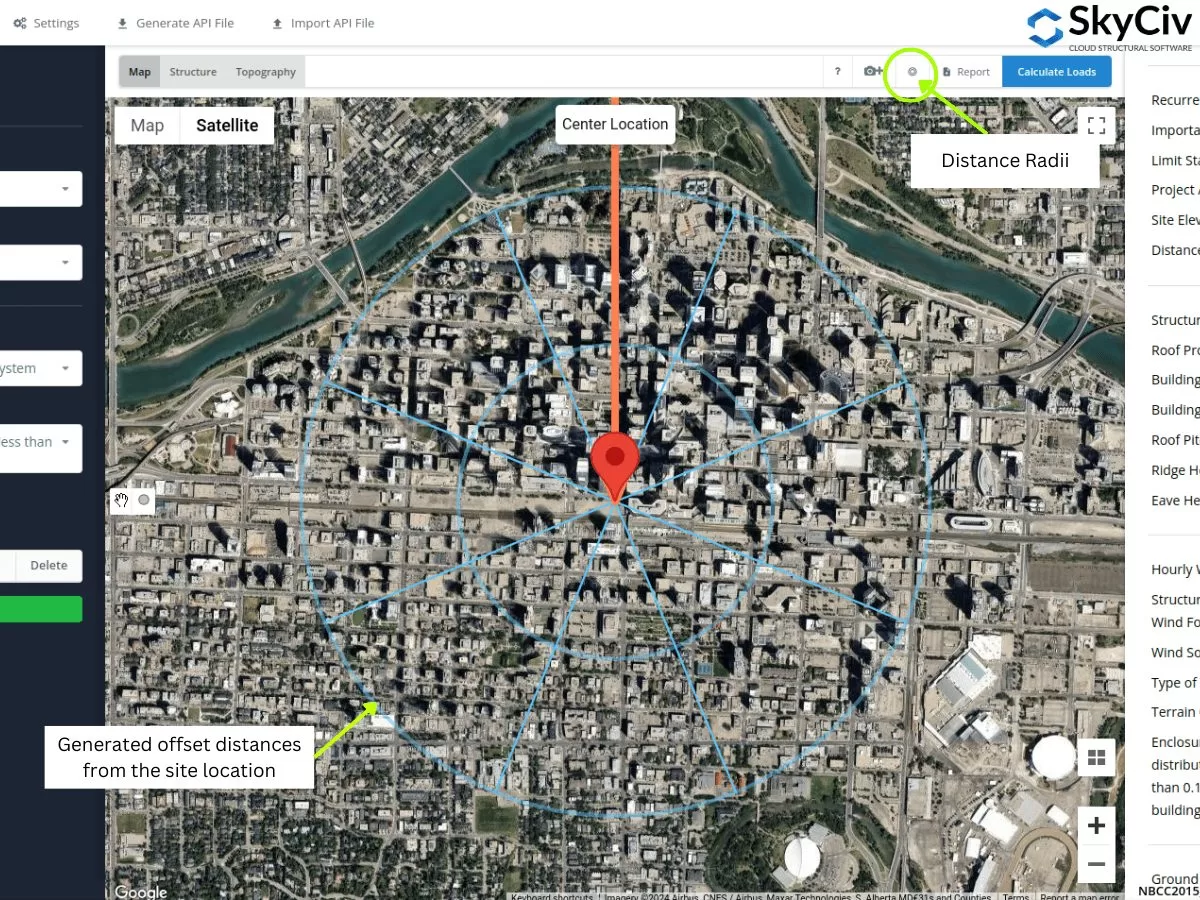
Abbildung 21. Das im SkyCiv Load Generator eingeführte Werkzeug „Abstandsradien“, mit dem Versatzabstände vom Standort angegeben werden können.
Die Radienwerte können beim Öffnen der Einstellungen bearbeitet werden.
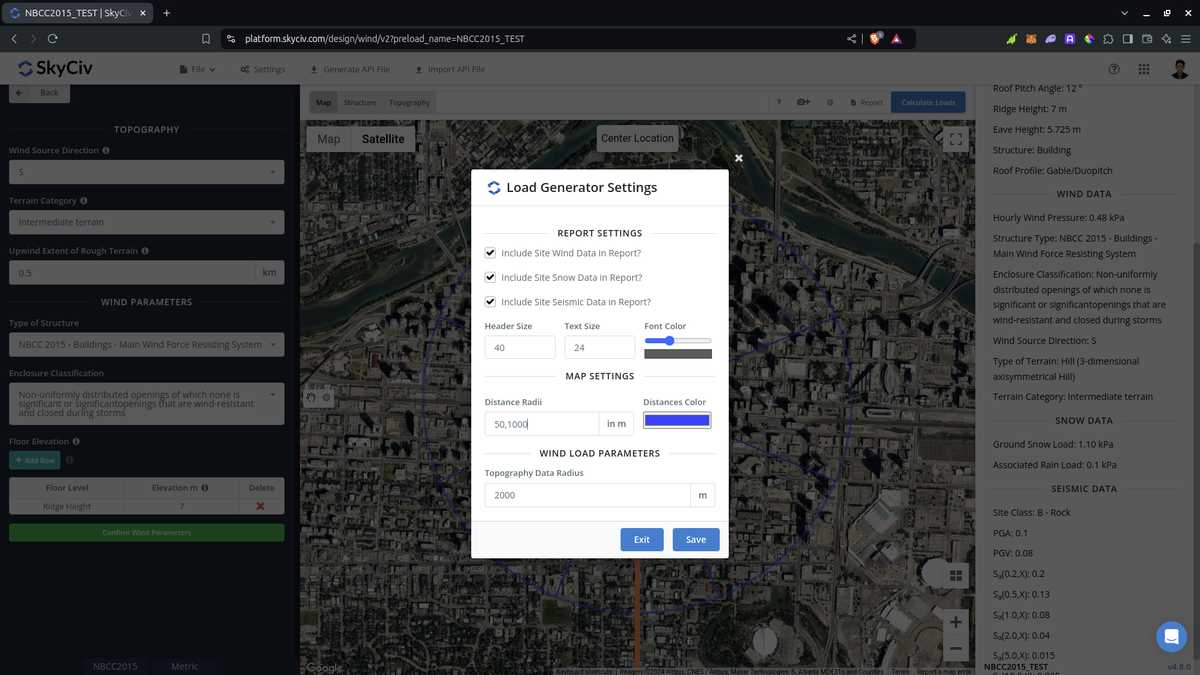
Abbildung 22. Option in den Einstellungen zum Bearbeiten der Abstände für das Entfernungsradien-Werkzeug im SkyCiv-Lastgenerator.
Beachten Sie, dass Benutzer die Entfernungswerte bearbeiten müssen, da diese nicht automatisch von der Software berechnet werden. Verwenden Sie dies für ASCE 7 und NBCC, Für jede Windquellenrichtung ist die schlechteste Expositions- oder Geländekategorie zu verwenden. Im Hinblick auf die Verwendung in AS/NZS 1170.2 (2021), Die Software verwendet die Radienwerte nicht zur Berechnung des Durchschnitts \( M_{mit,Katze} \) Werte. Stattdessen, Die Durchschnittsentfernung wird als anwendbarer Bereich verwendet, in dem wir eine homogene Geländekategorie zuweisen können, Annahme der schlechtesten Kategorie für jede Windquellenrichtung.
Aus den oben besprochenen Abschnitten, Mit diesen neuen Werkzeugen können Sie die Expositions- oder Geländekategorien für jede Windquellenrichtung bestimmen. Die oben genannten Verfahren können Ihnen eine schnelle Geländeklassifizierung jeder Windquellenrichtung ermöglichen. Verwendung von GIS- und KI-Tools, Sie können die Kriterien, die wir oben für jede Windquellenrichtung verwendet haben, weiter überprüfen und so ein besseres und effizienteres Ergebnis erzielen.
Statiker, Produktentwicklung
MS Bauingenieurwesen
Verweise:
- Minimale Bemessungslasten für Gebäude und andere Strukturen. (2017). ASCE / SEI 7-16. Amerikanische Gesellschaft der Bauingenieure.
- Nationaler Forschungsrat von Kanada. (2015). Nationales Baugesetz von Kanada, 2015. Nationaler Forschungsrat von Kanada.
- Standards Australien (2021), Strukturelle Entwurfsmaßnahmen. Teil 2 Windaktionen, Australischer/neuseeländischer Standard AS/NZS1170.2:2021, Standards Australien, Sydney, NSW, Australien.
- Google Maps



